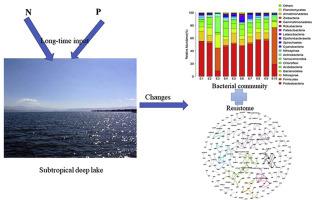当前位置:
X-MOL 学术
›
Environ. Pollut.
›
论文详情
Our official English website, www.x-mol.net, welcomes your feedback! (Note: you will need to create a separate account there.)
Metagenome sequencing to unveil the resistome in a deep subtropical lake on the Yunnan-Guizhou Plateau, China.
Environmental Pollution ( IF 8.9 ) Pub Date : 2020-03-29 , DOI: 10.1016/j.envpol.2020.114470 Xiong Pan 1 , Li Lin 1 , Weihong Zhang 2 , Lei Dong 1 , Yuyi Yang 2
Environmental Pollution ( IF 8.9 ) Pub Date : 2020-03-29 , DOI: 10.1016/j.envpol.2020.114470 Xiong Pan 1 , Li Lin 1 , Weihong Zhang 2 , Lei Dong 1 , Yuyi Yang 2
Affiliation

|
Erhai Lake in the Yunnan-Guizhou Plateau, a typical subtropical deep lake, experienced long-time input of nutrients and pollutants, which provides beneficial conditions for evolution and spread of resistance genes. In this study, the profile of bacterial community, antibiotic and metal resistance genes in sediments of Erhai Lake were analyzed via high-thought sequencing of 16S rRNA and metagenomic DNA. Proteobacteria, Firmicutes, Nitrospirae, and Bacteroidetes were found to be the main composition of the bacterial community. Multidrug-, bacitracin-, macrolide-lincosamide-streptogramin (MLS)- and tetracycline resistance genes were the primary antibiotic resistance gene (ARG) types with high relative abundance, whereas Multi-metal-, and arsenic- resistance genes were the primary metal resistance gene (MRG) types. The effects of nitrogen and phosphorus on the abundance of ARGs and MRGs depended on the different types. Some specific ARG (fosmidomycin resistance genes) and MRG types (multi-metal resistance genes) also showed significant geographic distribution. Bacterial community was the main driver shaping the resistome. Nutrients also played an essential role in structuring the bacterial community and resistome in the sediments of Erhai Lake. This study sheds light on the distribution and fate of resistome under a high load of nitrogen and phosphorus in a deep lake.
更新日期:2020-04-20



























 京公网安备 11010802027423号
京公网安备 11010802027423号